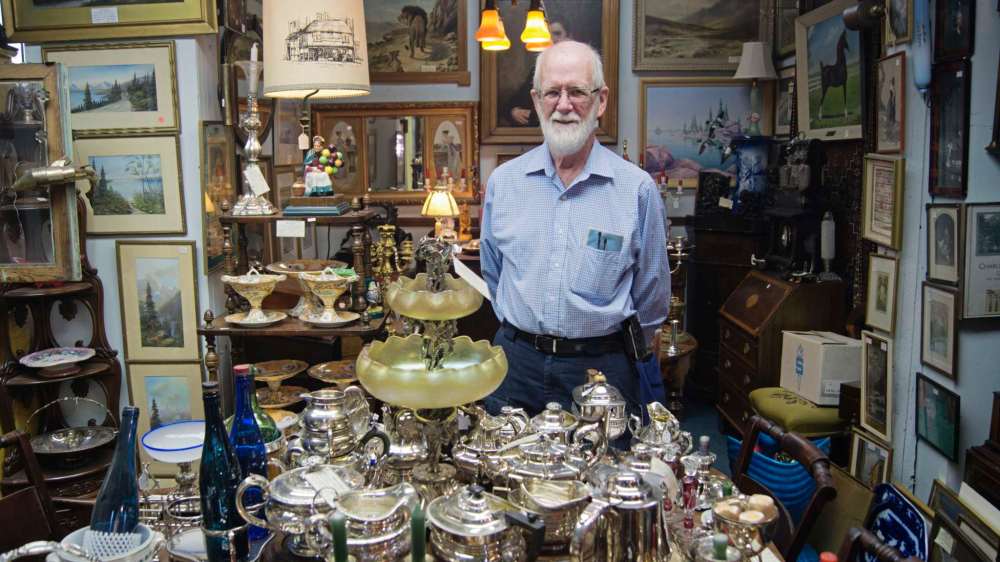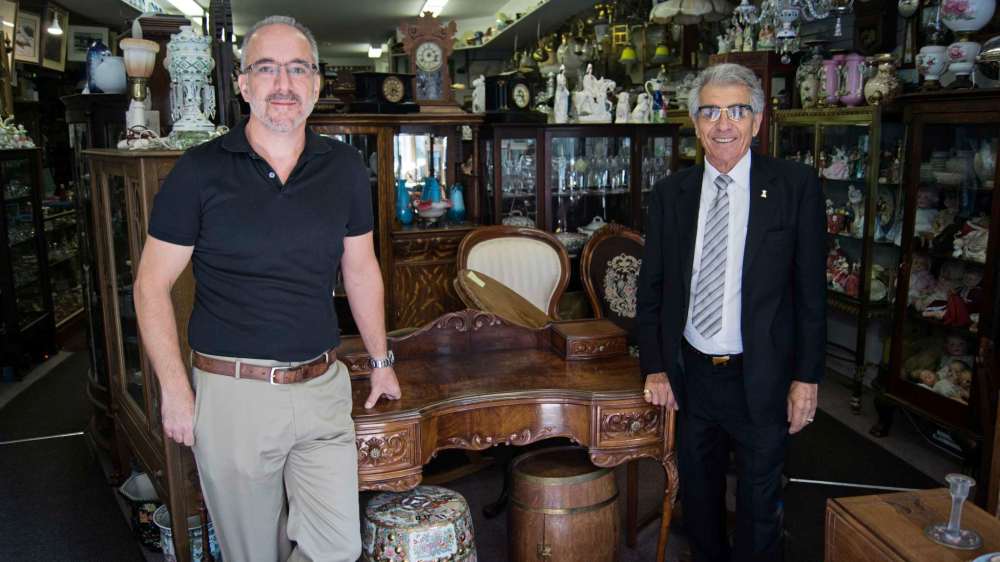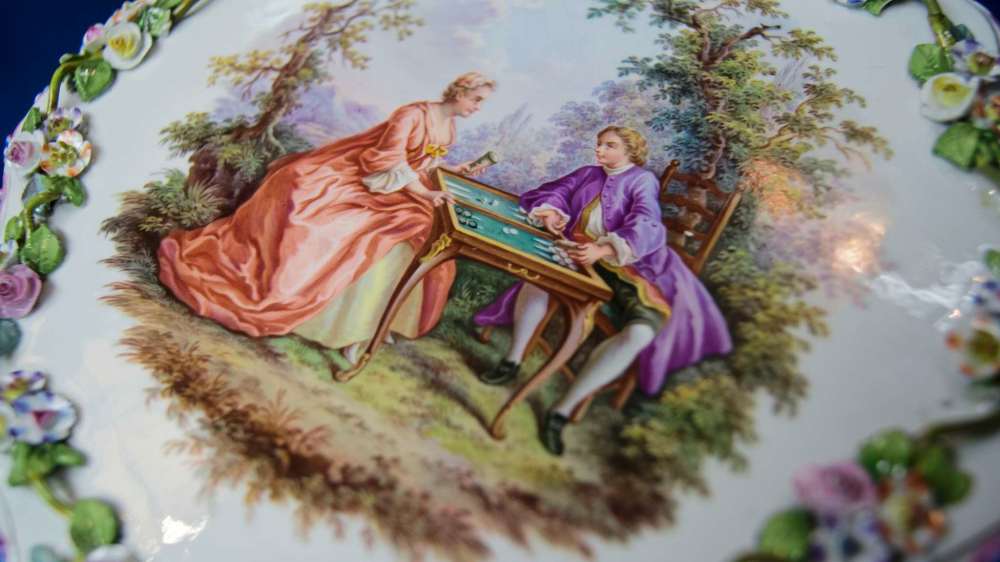History’s caretakers
Local antique shops keep the past alive
Advertisement
Hey there, time traveller!
This article was published 15/09/2015 (3646 days ago), so information in it may no longer be current.
Winnipeg’s history is rich — just ask Selim Aysan.
The antique dealer has been operating his shop Selim’s Antiques at 801 Corydon Ave. since 1977, curating the finest antiques found in Winnipeg.
“In the 1880s, Winnipeg was the working capital of the country and because of that, a lot of influential families came to Winnipeg and with them they brought some high-end, high-quality stuff,” Aysan, who often goes by Sal, said.

“That’s why Winnipeg is one of the best cities to be in the antique business, in all of Canada.”
Indeed there are many antique shops in Winnipeg with a number of them located in southwest Winnipeg. On Corydon Avenue alone there are three well-known shops: Selim’s, Abbey Antiques and Art, and Things Antiques and Gifts.
Each shop is different, specializing in a different area of antiques, and showcasing different types of collectibles on their well-stocked shelves. The common thread through each, however, is the love for history and the anguish of potentially losing it.
Together Sal and his son Dan, who now owns the business, run the high-end antique store that could be compared to a museum. According to Dan, Selim’s deals in “the highest quality of what we can find” and specializes in antique jewelry, art, and furniture.
“I like to say we’re almost an adoption agency. We take the unwanted and the neglected and find them a new loving home, hopefully,” he said.
Over the 38 years on the strip many noteworthy pieces of local history have flowed through the shop, but today moving items out has become a challenge.
“Unfortunately the vast majority of the antiques in here don’t sell much anymore,” Dan said, citing changes in lifestyle and aesthetic choices as one reason inventory hasn’t yet found a new home.
Winnipeg is one of the best cities to be in the antique business, in all of Canada – Sal Aysan.
“We’ve seen a definite shift in the last 10 years away from using fine china and silverware, decorating with objects d’art… things of that nature just aren’t being bought as often as they used to,” he said.
Antiques can become part of the green movement
Despite increased public awareness when it comes to reducing waste and personal carbon footprints, the average consumer doesn’t consider antiques as an option when furnishing homes, stocking kitchens, and decorating living spaces.
“It’s disturbing that we’re supposed to be moving towards a greener lifestyle, yet people are buying particle board and plastic,” Dan, 47, said.
The silverware, glassware, furniture and jewelry that populate most antique shops have lasted a century or more and potentially have another century of use in them yet, making antiques an effective and cultured way of reducing waste.
“I’d like to see people understand that a lot of the choices they’re making, especially in furniture, are some of the least green choices you can possibly make,” Dan said. “The furniture is so full of chemicals, it’s so poorly made that it doesn’t last, and people are buying with the idea that they’ll upgrade in five or 10 years… It leads to a lot of waste.”
If you want to constantly change what you’re surrounded by, you’re subject to the whims of other people telling you what is in fashion and what is not. And I say to heck with that. – John Cooper.
Across the street at Abbey Antiques and Art (914 Corydon Ave.), owner John Cooper shares the sentiment but is more forward with his opinions on today’s antique industry.
“The business as a whole is in the doldrums,” Cooper, 75, said.
Cooper has been collecting antiques since the late 1960s. He opened Abbey Antiques on Corydon 25 years ago after leaving his career in DNA research.
“It’s different in the fact that I was gainfully employed and now I’m not — I’m self-employed and sometimes it’s gainful and sometimes it’s not,” Cooper said. “But I still use the same investigative techniques.”
At Abbey Antiques, Cooper deals primarily in items older than 100 years but won’t pass up a well-designed, well-made piece from periods as early as the 1980s. Silver and glass are Cooper’s specialties, as evidenced by his “tastefully crammed” shop filled with gleaming silver.
In Cooper’s experience, current buyers are not interested in true antiques and are instead looking for vintage (1950-1970) pieces if they’re in the market.
The volunteers are the nuts and bolts of this operation and through their dedication and a myriad of detail we’re able to make that donation. – Jane Fudge.
“They’re afraid of antiques,” Cooper said. “They want ironstone mugs that they can throw in the dishwasher and not worry about them.”
Perusing antique shops as an alternative to big box stores with mass-produced items is a more mindful and rewarding experience, Cooper said.
“You have to make up your own mind and decide what your taste is,” Cooper said. “If you want to constantly change what you’re surrounded by, you’re subject to the whims of other people telling you what is in fashion and what is not. And I say to heck with that.”
Acting as good stewards
While Cooper and the Aysans have their reservations about the future of the antique industry, one little shop on the corner has been growing.
At Things Antiques and Gifts (913 Corydon Ave.) volunteers with the women’s committee of the Royal Winnipeg Ballet are busy stocking shelves, sorting consignment items, and assisting curious shoppers.
“The customers that come in have a very discerning eye for items that can be considered giftware or accent pieces for their home,” said Jane Fudge, volunteer and president of the women’s committee of the Royal Winnipeg Ballet.

Things opened on Corydon Avenue about eight years ago with the sole purpose of raising money to make an annual donation to the ballet. On average the shop raises between $30,000 to 35,000 to donate to the ballet.
“We have a loyal following of customers for which we are very grateful,” Fudge said, adding that customers specifically shop, consign or donate items at Things because of its connection to the ballet.
According to Fudge, Things carries items that are considered decorative arts and jewelry, as well as high-end goods that fit into decorative arts items, whether that is glass, silver or china. On a typical day, close to 15 volunteers are in the shop working in both the front and the back.
“The volunteers are the nuts and bolts of this operation and through their dedication and a myriad of detail we’re able to make that donation.”
For each establishment, the desire to continue acquiring and selling seemingly underappreciated items and tidbits of Winnipeg’s history is intrinsic.
From curating pieces of the past, to reducing waste, to supporting the arts, to the joy of seeing items find new and loving homes, antiquing may not be particularly plentiful but it does enrich the spirit.

And as Sal said, “that gives me more pleasure than money.”
Facebook.com/TheSouwesterWPG
Twitter: @SouwesterWPG
What is your experience with antiques? Are you a window shopper, collector or enthusiast? Share your story below.
History
Updated on Thursday, September 17, 2015 1:45 PM CDT: Replaces photo of ring from Selim's Antiques with correct 1920s period piece and correction to caption to reflect date and material.




